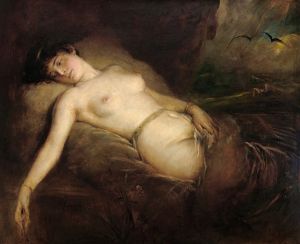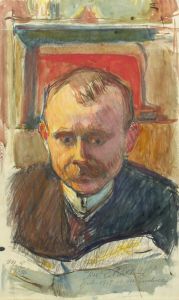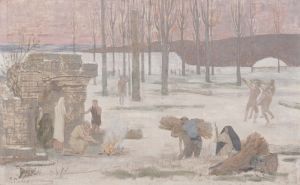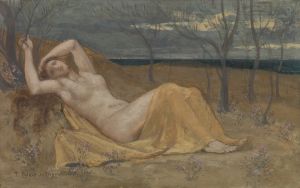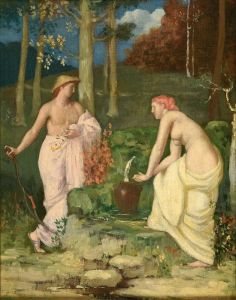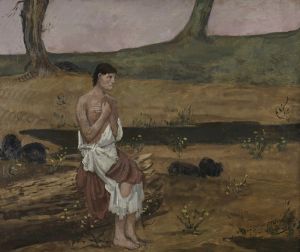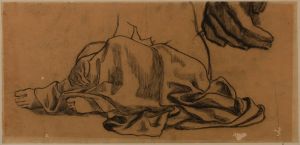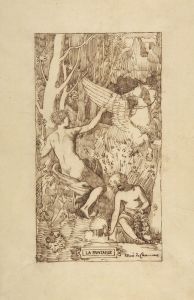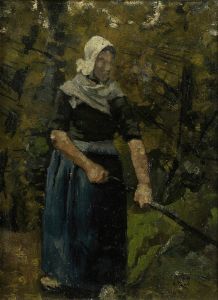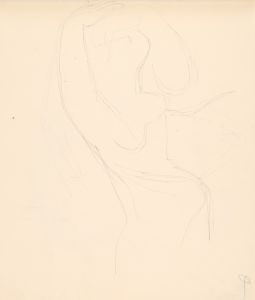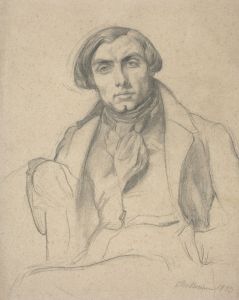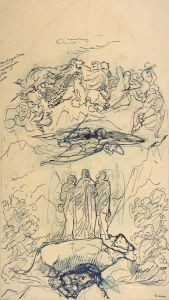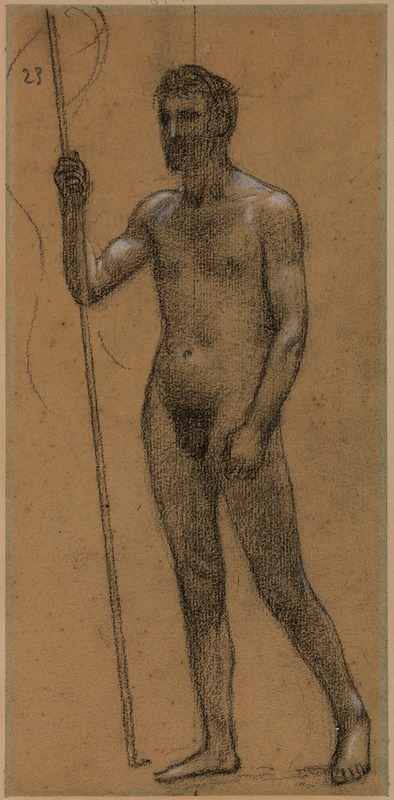
Homme nu de face, tenant un bâton
A hand-painted replica of Pierre Puvis de Chavannes’s masterpiece Homme nu de face, tenant un bâton, meticulously crafted by professional artists to capture the true essence of the original. Each piece is created with museum-quality canvas and rare mineral pigments, carefully painted by experienced artists with delicate brushstrokes and rich, layered colors to perfectly recreate the texture of the original artwork. Unlike machine-printed reproductions, this hand-painted version brings the painting to life, infused with the artist’s emotions and skill in every stroke. Whether for personal collection or home decoration, it instantly elevates the artistic atmosphere of any space.
Pierre Puvis de Chavannes (1824–1898) was a prominent French painter known for his allegorical and symbolist works, often characterized by their muted color palette and serene, timeless quality. Among his lesser-known works is Homme nu de face, tenant un bâton (translated as Nude Man Facing Forward, Holding a Staff), a study that exemplifies his interest in the human form and classical themes.
This artwork is a preparatory study or standalone figure drawing, showcasing Puvis de Chavannes' mastery of anatomy and his ability to depict the human body with a sense of dignity and restraint. The painting portrays a male figure standing upright, facing forward, and holding a staff in one hand. The figure is nude, emphasizing the artist's focus on the natural form and musculature of the human body. The pose is static yet imbued with a quiet strength, reflecting Puvis de Chavannes' tendency to depict figures in contemplative or symbolic stances rather than dynamic action.
The work is executed with a subdued color palette, a hallmark of Puvis de Chavannes' style, which often avoided dramatic contrasts in favor of harmonious tones. This approach lends the figure a timeless and almost ethereal quality, aligning with the artist's broader aesthetic goals of creating works that transcend specific historical or cultural contexts. The simplicity of the composition directs the viewer's attention entirely to the figure, highlighting the artist's skill in rendering form and proportion.
While Puvis de Chavannes is best known for his large-scale murals and allegorical paintings, such as those in the Panthéon in Paris, Homme nu de face, tenant un bâton provides insight into his process and his interest in classical ideals. Studies like this one were often used as preparatory exercises for larger compositions, allowing the artist to refine his understanding of anatomy and the interplay of light and shadow on the human body.
The exact date of this work is not definitively documented, but it is consistent with Puvis de Chavannes' broader oeuvre, which frequently drew inspiration from classical antiquity and sought to evoke a sense of universal human experience. The purpose of the piece—whether as a study for a larger work or as an independent exploration of the male form—remains unclear, as does its original context or commission.
Today, Homme nu de face, tenant un bâton is appreciated as an example of Puvis de Chavannes' technical skill and his commitment to the ideals of beauty and harmony. It reflects the artist's unique position in 19th-century French art, bridging the academic traditions of the past with the emerging symbolist and modernist movements.





